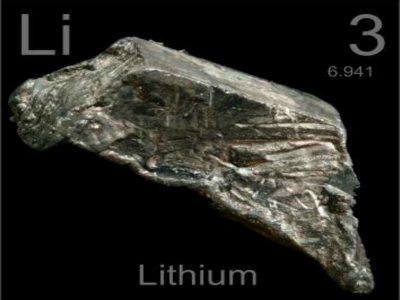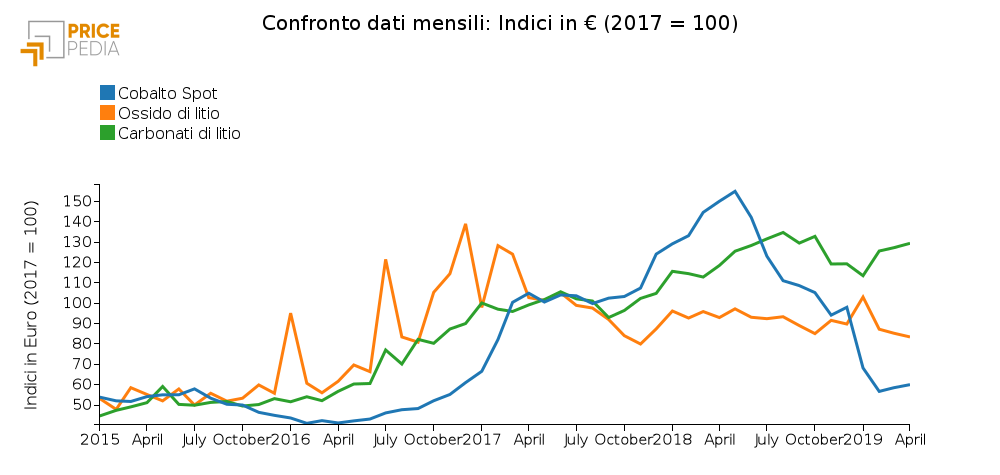The Strategic Battle for Lithium. Huge Reserves in Bolivia, Argentina, Chile

On March 15, 2018, Maurizio Stefanini, reporter of an italian right think-tank, complained that the huge reserve of Lithium present in Bolivia was in the hands of the State“” and of the bad example“” of Evo Morales. (1) In the same article it was pointed out that, on the contrary, Chile and Argentina, the other two Saudi Arabian”of Lithium, had generated a real race for lithium”, as in romantic Yukon era.
In Chile, according to 2016 data, 68,874 metric tons ™ of lithium carbonate equivalent (cle) were extracted by private companies Albemarle and Sociedad Química de Minerales de Chile (SGM). The latter is owned 29 percent by billionaire Julio Ponce Lerou, who ranked 422 on the Forbes chart of the rich planetary planets, thanks to the Lithium boom. At that time, Chile had a 33% share of the Lithium world market.
In 2016, the Argentinean companies FMC Corporation and Orocobre produced 30,340 tm of cle, reaching a 16 percent share of the world market.
The article reported the opinion of an alleged expert in the field, named Joe Lowry, nicknamed in the branch as “Mr. lithium”. According to Lowry, the mineral mining industry would require large and adequate investments to achieve discrete extractive values.
The subordinate position of the Argentinean companies was precisely due to the absence of investment, due to the “conflicts with the Kirchner”, contrasts which would evidently have ceased with the establishment of the neoliberal government of Macri.
The global capital wants to put its hands on lithium, a strategic element for the production of batteries, not only for the mobile phone market, but especially for the new business of electric car industry.

Price indexes of Lithium Carbonate, Lithium Oxide and Cobalt (Source: Pricepedia)
In recent years, the “lithium rush” has generated a significant increase in prices of mineral, and, consequently, in the profits of mining companies. The price of lithium, in the form of carbonate, in 2015 was around 5 euro/kg, while in 2018 it reached 12 euro/kg (+140%). Lithium oxide increased from 7.5 to 12 euro/kg (+61%). “Currently the Li-Ion accumulators are the most used and according to a report of the Chilean Chemical and Mining Society (SQM), one of the largest lithium producers in the world, The demand for key components for the production of this type of accumulator will also increase significantly in the coming years (2).
The important question we should ask ourselves is this: has this Lithium Rush brought wealth to popular classes of Argentina and Chile, as well as to the pockets of speculators?
The answer is obviously negative. This is demonstrated by the history of recent events in Chile and Argentina.
In the first of the two countries, a great popular riot has broken out against the neoliberal Pinera government, which has given rise to a bloody repression of demonstrators, on which there has been the complete disregard of the Western world.
Likewise in Argentina, a large popular opposition has decreed the end of the neoliberal government and the election of a government once again close to Kirchnerian popular politics.
Underlying both popular protests are extreme poverty, the indecent level of wages, privatisations, the high cost of living and services – largely owned by private companies – the subtraction of the nation’s wealth by monopolistic enterprises, in comparison with the high salaries of police soldiers and all government officials and bureaucrats who help to maintain the order of neoliberal autocracy.
In short, the money of the Lithium Rush has filled the pockets of monopolists.
From these pockets – now absolutely hermetic – despite neoliberal fables, no wealth poured in favour of popular classes.
Otherwise, what happened in Bolivia?
The government of Evo Morales had placed its attention on Lithium. In the Salar of Uyumni, the country boasts the most important reserve of lithium in the world. In 2018, its production amounted to around 120 tons of cle per year: a small share for the interests of speculators. The government of Evo Morales recalled that projects developed in Bolivia have tried to take account of environment. More importantly, the government had chosen a social route for the development of this mining industry. The aim of the projects was not only to export, but to manufacture the finished product (batteries) in Bolivia, reserving the monopoly of extraction and subsequent production to industries wholly owned by the State, such as the mining industry, entrusted exclusively to the Yacimientos de Litio Bolivia.
Evo Morales applied the recipe of reserving to community the means of production, in order to decide what, how, where to produce, in accordance with the conservation needs of the environment.
The goals achieved in recent years by the Bolivian State, the elections always won by its President, including the last, show that there has been a fair distribution of wealth in favor of the popular classes of the country.
Against this socialist path, in recent years almost all mainstream and all think-thanks of neoliberalism have been hurled.
The production sector of electric cars is also at the heart of great financial manoeuvres that are taking place in the green economy sector. There has been an undoubted massive investment of resources in the promotion of cultural hegemony within the Western mainstream, towards the need for massive investments in“technologies considered green”, even if these are not so “green” such as the production of battery-powered cars, which become impacting hazardous waste after a few years of operation.
These great manoeuvres were well explained by F. William Engdahl, in an article recently appeared in Global Research (3).
Engdahl notes that the mega-corporations and mega-billionaires behind the globalisation of world economy, whose pursuit for shareholder value and cost reduction has caused so much damage to our environment both in the industrial world and in the underdeveloped economies of Africa, Asia and Latin America, are the main supporters of the decarbonisation movement.
Engdahl also affirms:
“In 2013 after years of careful preparation, a Swedish real estate company, Vasakronan, issued the first corporate “Green Bond.” They were followed by others including Apple, SNCF and the major French bank Credit Agricole. In November 2013 Elon Musk’s problem-riddled Tesla Energy issued the first solar asset-backed security. Today according to something called the Climate Bonds Initiative, more than $500 billion in such Green Bonds are outstanding. The creators of the bond idea state their aim is to win over a major share of the $45 trillion of assets under management globally which have made nominal commitment to invest in “climate friendly” projects.” […] “In 2016 the TCFD along with the City of London Corporation and the UK Government initiated the Green Finance Initiative, aiming to channel trillions of dollars to “green” investments. The central bankers of the FSB nominated 31 people to form the TCFD. Chaired by billionaire Michael Bloomberg of the financial wire, it includes key people from JP MorganChase; from BlackRock–one of the world’s biggest asset managers with almost $7 trillion; Barclays Bank; HSBC, the London-Hong Kong bank repeatedly fined for laundering drug and other black funds; Swiss Re, the world’s second largest reinsurance; China’s ICBC bank; Tata Steel, ENI oil, Dow Chemical, mining giant BHP Billington and David Blood of Al Gore’s Generation Investment LLC. In effect it seems the foxes are writing the rules for the new Green Hen House.
Bank of England’s Carney was also a key actor in efforts to make the City of London into the financial center of global Green Finance. The outgoing UK Chancellor of the Exchequer, Philip Hammond, in July 2019 released a White Paper, “Green Finance Strategy: Transforming Finance for a Greener Future.” The paper states, “One of the most influential initiatives to emerge is the Financial Stability Board’s private sector Task Force on Climate-related Financial Disclosures (TCFD), supported by Mark Carney and chaired by Michael Bloomberg. This has been endorsed by institutions representing $118 trillion of assets globally.” There seems to be a plan here. The plan is the financialization of the entire world economy using fear of an end of world scenario to reach arbitrary aims such as “net-zero greenhouse gas emissions.” (3).
This important concentration of financial forces, as also demonstrated by Cory Morningstar, author and environmental activist, have strongly supported that investment in cultural hegemony represented by the apparitions of Greta Thunberg and the Fridays for Climate. Both this phenomena has been reproduced and amplified by the mainstream media, just as the size of these economic interests is great.
Follow the money trail, people say in USA about politics and media.
This economic path is now quite clear: the crisis of over-production needs new financial outlets: raising money from funds to invest in prospects that become credible and also necessitated, such as the decrease of CO2 in the atmosphere, presented as the last opportunity before the Apocalypse.
To give a concrete dimension to these investments, however, they also need neoliberal domination of raw materials needed: lithium is among them.
From the neo-liberal point of view, their management must be taken away from the bad examples of “nationalization”. Thinking about extracting and producing lithium for the needs of the people and in respect for the environment, outside of speculative ambitions, is an attack at heart of globalized capitalist economy.
This is the reason why a freely elected President who enjoys the granite consensus of the popular masses of Bolivia should be ousted and forced to resign and flee the Country.
It becomes also clear which is the main enemy of the self-determination of peoples: in Bolivia there is not a song much different from the one played by the United States, NATO and the European Union in Syria, trying to break up an oil-producing country in order to throw it into easy hands to run.
Italian main press agency, ANSA, reported a few days ago that an order of capture was allegedly issued against Evo Morales. The source were statements of Mr. Camacho, who is none other than the leader of that opposition which challenged without substantiated reason the President’s legitimate election. No official charge was held by Mr Camacho at the time of that statement.
This says a lot about how West Governments and European Union are aligned with the NATO imperialistic agenda, and with the interests of finance and globalized industry.
The enemy is naked, we have just to refuse to cover him up and start fighting.
*
Note to readers: please click the share buttons above or below. Forward this article to your email lists. Crosspost on your blog site, internet forums. etc.
Notes
(1) M. Stefanini, Chi ha il litio non ha i denti, Il Foglio, 15.3.2018
(2) C. Ranocchia, I prezzi del litio su livelli da record, Pricepedia, 29.5.2019
(3) F William Engdahl, Climate and The Money Trail, Globalresearch, 25.9.2019

